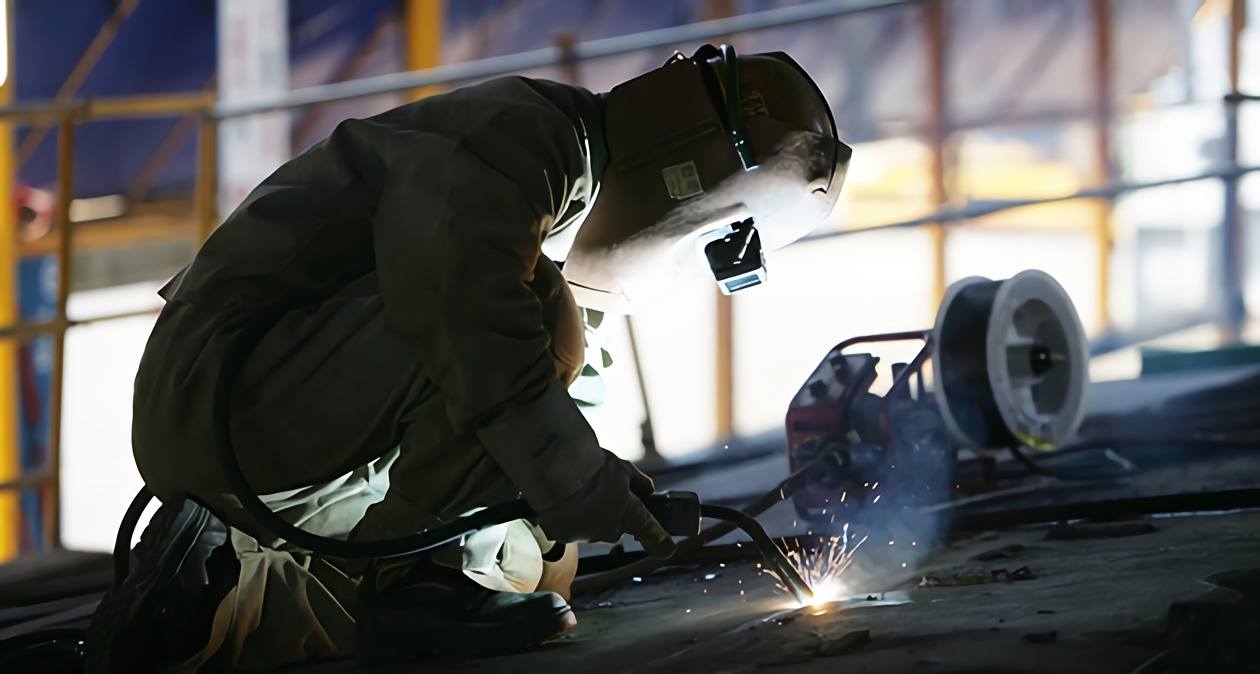TWS is a Great Training Option for Everyone
Learn more about how we can prepare you to advance your career.
Welded joints have been steadily replacing rivets in the construction of steel-frame buildings. Welded joints offer tremendous savings in that a welded section offers more strength than a riveted section does. In fact, the loss of strength on a riveted section is substantial at 30 to 50 percent.
Why Welded Joints are Replacing Rivets in the Construction Industry
Welding is an essential element of several industries, including construction. Skilled professional welders can join two metal structures together with such strength that the joint will not part unless physically cut. There are numerous advantages to using welded joints over rivets, including:
- Holes must be drilled in order to use rivets. These holes must be aligned accurately.
- There must be enough clearance to set rivets properly.
- The holes are sometimes punched instead of drilled; however, this process leaves residual stress around the hole. The hole needs a larger diameter to alleviate this stress.
- On occasion, the holes that are made ahead of time in the shop will not line up on-site. In this case, a drift is hammered into the hole, which squeezes the holes to allow the insertion of the rivet (or bolt). This process usually results in an inferior joint that is prone to cracking.
- When welding is used in the supporting components of a structure, the necessity for the use of heavy steel in the lower levels is eliminated. Welded sections can support the load of the entire structure. A building that is constructed using welded sections weighs at least one-third less than an identical building constructed using rivets.
- Another benefit of using less steel is a reduction in the overall cost of the construction project.
Steve Sumner is the Director of Global Marketing for the Lincoln Electric Co., in Ohio. He states that welding is a productive and cost-effective method for joining metals. Sumner also speculates that the consumer welding market will continue to grow.
Have You Considered a Career in the Skilled Trades?
Fill out the form to recieve a no obligation info packet.
As Welded Joints Replace Rivets, the Need for Skilled Personnel in the Construction Industry Continues to Rise
Forbes recently released its Top 10 List of the hardest jobs to fill in 2014. For the fifth year in a row, skilled trade workers, including welders, are listed among the top 10 since 2008. In fact, skilled trade workers have remained number one on Forbes’ Top 10 List every year since 2010.
This shortage is only slated to become more severe, as a large portion of the skilled trade labor force will retire in the upcoming years. According to data compiled by EMSI, more than half of America’s skilled trade workers are 45 years or older, and almost one fifth are over age 55. Moreover, the oil and construction boom in this country is driving up the demand for welders sharply.
The Gulf Coast, for example, is already battling a severe welder shortage due to the unprecedented rise of shale extraction in the region. These labor shortages cause delays in the construction of the processing and refining facilities, threatening to slow down the boom and push back the projected date of energy independence, 2035 (as estimated by BP PIC).
Welding Certification Training
This promising labor market can drive more and more young people towards skilled trades careers like welding. While most high school graduates are encouraged attend a 4-year college program, one-third of college graduates do not work in occupations related to their fields of study according to a 2013 survey conducted by CareerBuilder.
However, choosing to embark on a skilled trades career like professional welding can be a very economical alternative: Not only is the pay 1 encouraging – the median annual salary of $36,000 and 10% earn more than $56,000, you can also complete welding certification training in less than a year, thus starting to make money soon after your training. As the construction industry is booming and welding is becoming indispensable, professional welders face a bright future.
1. http://www.bls.gov/ooh/production/welders-cutters-solderers-and-brazers.htm#tab-5
This blog has been labeled as archived as it may no longer contain the most up-to-date data. For a list of all current blog posts, please visit our blog homepage at https://www.tws.edu/blog/







